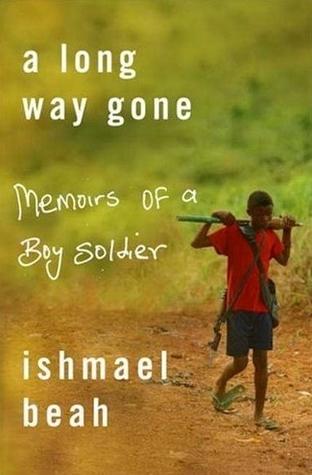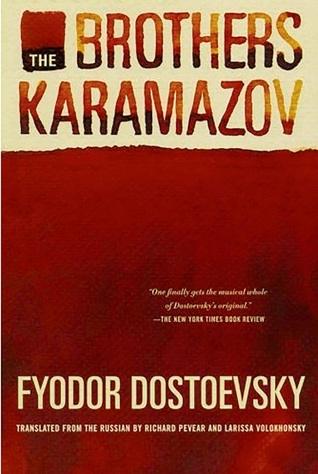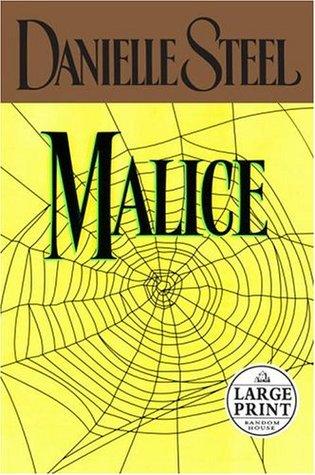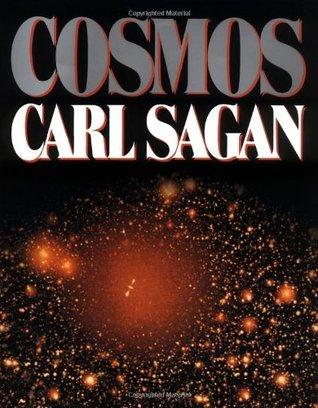The Sun Also Rises by Ernest Hemingway Book Summary
Discover a comprehensive summary and key insights of Ernest Hemingway's classic, "The Sun Also Rises." Explore our in-depth review to understand the themes, characters, and the impact of this iconic novel. Perfect for readers and students alike!
The Sun Also Rises Book Summary
Ernest Hemingway's The Sun Also Rises captures the disillusionment of the Lost Generation through Jake Barnes, a war-wounded journalist navigating post-WWI Europe with his unrequited love Lady Brett Ashley. This groundbreaking 1926 novel explores themes of masculinity, love, and existential emptiness against the backdrop of Paris cafés and Spanish bullfights. Hemingway's spare, understated prose style revolutionized modern literature while depicting a generation struggling to find meaning after the devastation of World War I. The story follows Jake and his expatriate friends as they drift through life, seeking purpose through travel, drinking, and fleeting relationships, ultimately confronting the futility of their existence.
Discover the magic and lessons of C.S. Lewis's classic through our detailed The Lion, the Witch and the Wardrobe Book Summary, Review & Key Insights, perfect for readers seeking inspiration and adventure.
The Sun Also Rises by Ernest Hemingway - Introduction
I had no idea a book about a group of aimless expats wandering through post-WWI Europe could feel so alive and raw. When I picked up The Sun Also Rises by Ernest Hemingway, I was expecting just another classic American novel—something a bit dry, maybe a little dated. But what struck me was how it captures that restless, searching feeling we all get sometimes, especially in our twenties. The way Hemingway writes about disillusionment and the search for meaning made me rethink how often we try to find purpose in the chaos of life without really knowing what we want.
I chose this book because I’d heard it was a cornerstone of 20th-century literature and set in Spain, which I love. Plus, at just 189 pages, it seemed like a manageable dive into classic fiction without feeling overwhelmed. It’s a mix of historical fiction, classic literature, and a bit of raw human emotion wrapped up in Hemingway’s famously spare style.
If you’re someone who’s ever felt lost or stuck—like you’re drifting through life without a clear direction—this book will speak to you. Or if you enjoy stories that are more about mood and atmosphere than action, with beautiful, understated prose, you’ll appreciate it. Also, if you’re into novels that explore friendship, love, and the scars left by war, this is a perfect pick.
Honestly, it’s like having a coffee with a friend who’s been through a lot and just gets it. You’ll finish it in a few sittings but carry its mood with you much longer.
What is The Sun Also Rises About?
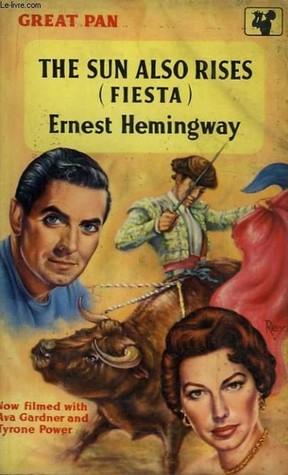
The Sun Also Rises by Ernest Hemingway follows a group of expatriates in the 1920s as they navigate love, loss, and the disillusionment of the post-World War I generation. The book's main message highlights the struggles of finding meaning and purpose in a world marked by chaos and moral ambiguity. Key concepts include the exploration of the "Lost Generation," the impact of war on personal identity, and the pursuit of authenticity in relationships, all set against the backdrop of the vibrant yet tumultuous culture of the time.
About Book Author - Ernest Hemingway
Introducing Ernest Hemingway
It's a real pleasure to welcome someone whose journey into writing is as compelling as the stories he tells. Ernest Hemingway didn't start out as the voice of a generation; he was a young man thrust into the crucible of war and its aftermath. What's interesting about Ernest is how those experiences in Europe, particularly the vibrant, yet aimless, life in Paris and the raw energy of Spain, directly fueled the creation of The Sun Also Rises. He saw a world grappling with new realities, and he felt compelled to capture it.
Many know of his adventurous spirit, but perhaps not that he once earned money as a boxing sparring partner in Paris – a testament to his grit even before his words found their full power. This isn't someone who merely studied life from afar; he plunged into it. His understanding of courage, disillusionment, and the search for meaning isn't academic – it's etched from personal experience. That's why, when you read about Jake Barnes and Lady Brett, you feel an undeniable authenticity. He was uniquely positioned to chronicle that post-war drift because he navigated it himself, giving us not just a novel, but a testament to a time, a feeling that echoes even in later works like A Farewell to Arms.
More Books To Find
The Sun Also Rises - Book Overview
It's about a group of American and British expatriates in the 1920s who travel from Paris to Spain, searching for meaning and purpose after World War I. They experience the thrill of bullfighting, the beauty of the Spanish landscape, and the complexities of love and friendship, but they’re all haunted by a sense of disillusionment.
Hemingway wrote it to capture the essence of the "Lost Generation," those who felt disconnected and aimless after the war. It’s less about the plot and more about the emotional landscape of these characters, reflecting a deeper commentary on the human condition and the search for identity in a post-war world.
What sets it apart from other novels is Hemingway's unique prose style. He uses short, clipped sentences that convey raw emotion without being overly sentimental. It's like a minimalist painting—simple yet profoundly impactful.
One story that really stuck with me is the bullfighting scenes. They’re not just about the sport; they symbolize life, death, and the struggle for authenticity. The way Hemingway describes the tension and beauty of the bullfight makes you feel the adrenaline and fear, almost like you’re in the arena yourself. It's a vivid reminder of the fragility of life and the pursuit of passion amidst chaos.
Key Insights of The Sun Also Rises
Exploration of the Lost Generation: The novel captures the disillusionment of the post-World War I generation, portraying characters who struggle with purpose and identity in a changed world.
Emotional Detachment: Hemingway's characters often exhibit emotional numbness, reflecting their inability to connect deeply with others. This detachment serves as a coping mechanism for their trauma.
The Role of Nature: The landscapes in the novel, particularly the bullfighting scenes in Spain, symbolize both beauty and brutality. Nature acts as a backdrop for the characters’ internal conflicts and search for meaning.
Masculinity and Honor: The story examines traditional notions of masculinity, particularly through the character of Jake Barnes, who grapples with his impotence and the societal expectations of manhood. This struggle highlights the complexities of male identity.
Search for Authenticity: The characters engage in a quest for genuine experiences, often through travel and adventure. Their journeys reflect a desire to escape their mundane lives and find authenticity in a world filled with superficiality.
Who Should Read This Book
"The Sun Also Rises" by Ernest Hemingway is ideal for readers who appreciate classic literature and the exploration of the human condition. It's perfect for those interested in the Lost Generation, post-World War I disillusionment, and the complexities of love and friendship. Fans of rich, evocative prose and character-driven narratives will find themselves captivated by Hemingway's unique style. Additionally, anyone seeking a deeper understanding of expatriate life in 1920s Europe will find this novel both enlightening and engaging, making it a must-read for literary enthusiasts and history buffs alike.
Read If You Are
- a fan of modernist literature and want to explore its themes of disillusionment and the Lost Generation
- interested in rich character development and complex interpersonal dynamics
- seeking a profound exploration of life, love, and existentialism through vivid storytelling
Skip If You Are
- Skip if you are looking for a fast-paced, action-driven plot.
- Skip if you prefer books with clear resolutions and happy endings.
- Skip if you dislike introspective narratives that focus on character development over action.
Important Takeaways from this Book
-
Embrace your passions: Identify one hobby or interest that excites you and dedicate at least 30 minutes daily to it. This matters because pursuing what you love fosters joy and fulfillment, enhancing your overall well-being. Consider your current commitments and carve out time to prioritize this passion.
-
Cultivate meaningful relationships: Reach out to a friend or family member you haven’t connected with recently and schedule a catch-up. Building strong relationships provides emotional support and enriches your life. Ensure you choose someone who positively impacts your life and be open to vulnerability during the conversation.
-
Practice mindfulness: Spend 10 minutes each day in quiet reflection or meditation. This practice helps reduce stress and improves focus, allowing you to engage more fully in life. Find a comfortable space where you won’t be disturbed, and use guided meditation apps if you’re new to the practice.
-
Set a personal goal: Write down one achievable goal you want to accomplish in the next month. This could be related to fitness, learning, or personal growth. Setting a goal gives you direction and motivation, making your progress measurable. Make sure the goal is specific and realistic to set yourself up for success.
-
Live in the moment: For one day, consciously focus on being present in every situation—whether at work, with friends, or during meals. This practice enhances your appreciation for life and improves your interactions with others. To prepare, remind yourself to pause and breathe whenever you feel distracted or overwhelmed.
Book Review
I picked up "The Sun Also Rises" expecting a straightforward narrative about the post-war disillusionment of the Lost Generation, and while I got that, I also found myself immersed in a beautifully crafted exploration of human relationships and existential angst. Hemingway's sparse, yet evocative writing style drew me in from the first page. His ability to convey deep emotions through simple dialogue is remarkable—like when Jake Barnes reflects on his impotence, which serves as a powerful metaphor for the broader disillusionment of his generation.
One of the book's biggest strengths is its vivid depiction of the vibrant settings, particularly the bullfighting scenes in Pamplona. Hemingway's descriptions made me feel as if I were right there, experiencing the thrill and tension of the event. The pacing, however, felt uneven at times. While some sections were gripping, others dragged on, particularly during the lengthy conversations among the characters that sometimes felt repetitive.
In comparison to F. Scott Fitzgerald’s "The Great Gatsby," I found "The Sun Also Rises" to be less focused on wealth and more on the internal struggles of its characters. Both books delve into the disillusionment of their time, but Hemingway's approach is more understated and raw.
Overall, I appreciated the novel for its honest portrayal of love, loss, and the search for meaning. I would recommend it to readers who enjoy character-driven stories with rich subtext. However, if you prefer fast-paced plots or more traditional storytelling, this may not be the book for you.
Final Thoughts
If I'm being honest, finishing The Sun Also Rises left me with a bittersweet feeling. Hemingway captures the essence of lost generation beautifully, but it’s not an easy read. The thing that surprised me most was how deeply I felt for the characters, especially Jake and his struggles with love and identity.
I'd definitely recommend this if you're someone who appreciates literary depth and can handle a slower pace. It's perfect for readers who enjoy exploring complex emotions and the intricacies of relationships. However, skip this one if you're looking for a fast-paced plot or a clear resolution; it can be frustrating if you prefer more conventional storytelling.
One thing that will stick with me months from now is the haunting sense of disillusionment that permeates the narrative. It really makes you reflect on your own life and choices. As for whether I’d read it again, I think I’d prefer to dive into the full book rather than just the summary; there’s something about Hemingway’s prose that deserves to be savored.
Overall, my reading experience was a rewarding challenge, and I’m glad I took the time to immerse myself in this classic.
Frequently Asked Questions
How long does it take to read The Sun Also Rises?
The Sun Also Rises by Ernest Hemingway has 189 pages. On average, it takes about 5-7 hours to read, depending on your reading speed. Enjoy the journey through the captivating prose and rich themes!
What makes "The Sun Also Rises" different from other books in this genre?
The Sun Also Rises stands out for its raw, minimalist prose and exploration of post-war disillusionment. Hemingway's unique voice captures the complexities of the "Lost Generation," focusing on themes of identity, love, and the search for meaning, setting it apart from typical contemporary literature.
Who is the target audience for The Sun Also Rises
The target audience for "The Sun Also Rises" includes readers interested in modernist literature, expatriates, and those exploring themes of disillusionment, love, and the Lost Generation. It appeals to fans of Hemingway's distinctive writing style and those seeking insights into post-World War I society.
Are there any criticisms or limitations of The Sun Also Rises
Critics often point to Hemingway's sparse prose and lack of character development as limitations. Some readers find the portrayal of women and the expatriate lifestyle problematic, while others argue the themes of disillusionment and masculinity can feel dated or overly simplistic.
What is the main theme of The Sun Also Rises by Ernest Hemingway
The main theme of "The Sun Also Rises" is the lost generation's disillusionment and the search for meaning in a post-World War I world. It explores the struggles of identity, love, and the pursuit of happiness amidst the backdrop of expatriate life in Europe.
Tags:
Ernest Hemingway, The Sun Also Rises, The Sun Also Rises Author, The Sun Also Rises Book, The Sun Also Rises Book Description, The Sun Also Rises Book Rating, The Sun Also Rises Book Review, The Sun Also Rises by Ernest Hemingway, The Sun Also Rises ISBN, The Sun Also Rises Short Summary

Michel Fisher
Michel Fisher is a passionate fiction enthusiast and book blogger who writes about emotional reads, character-driven stories, and contemporary romance authors that captivate hearts and minds.

The Sun Also Rises
Book Overview
Description
The quintessential novel of the Lost Generation, The Sun Also Rises is one of Ernest Hemingway's masterpieces, and a classic example of his spare but powerful writing style. A poignant look at the disillusionment and angst of the post-World War I generation, the novel introduces two of Hemingway's most unforgettable characters: Jake Barnes and Lady Brett Ashley. The story follows the flamboyant Brett and the hapless Jake as they journey from the wild nightlife of 1920s Paris to the brutal bullfighting rings of Spain with a motley group of expatriates. It is an age of moral bankruptcy, spiritual dissolution, unrealized love, and vanishing illusions. First published in 1926, The Sun Also Rises helped to establish Hemingway as one of the greatest writers of the twentieth century.
Key Points
Lost generation's disillusionment
Characters
Jake Barnes, Brett Ashley, Robert Cohn, Michael Campbell, Bill Gorton, Pedro Romero
Publisher
Pan Books
First Publish Date
10/28/26

